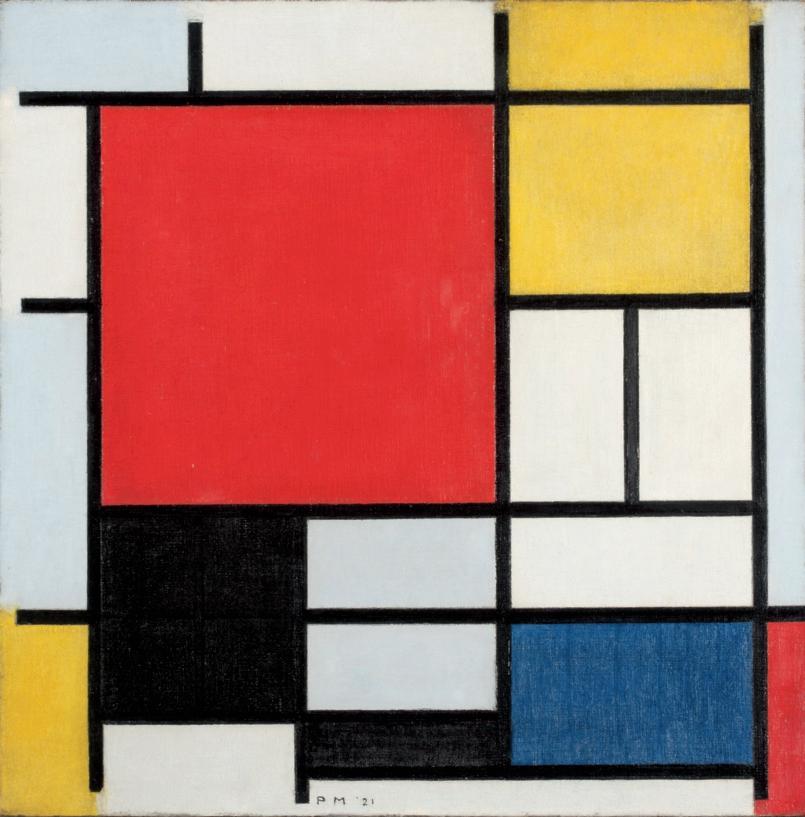
1 minute read
K A Story of Units® Part–Part–Total
TEACH ▸ Module 1 ▸ Counting and Cardinality
What does this painting have to do with math?
Piet Mondrian reduced his subjects to colorful geometric shapes. In this painting, bold, black horizontal and vertical lines frame the colorful squares and rectangles in red, black, yellow, and more. Do any of the shapes seem similar?
Do you notice that the smaller shapes are added together to create bigger shapes? How many shapes do you see in total?
On the cover
Composition with Large Red Plane, Yellow, Black, Gray and Blue, 1921
Piet Mondrian, Dutch, 1872–1944
Oil on canvas
Kunstmuseum Den Haag, The Hague, Netherlands
Piet Mondrian (1872–1944), Composition with Large Red Plane, Yellow, Black, Gray and Blue, 1921. Oil on canvas. Kunstmuseum Den Haag, The Hague, Netherlands. Image copyright © Kunstmuseum Den Haag. Image credit: Bridgeman Images

Great Minds® is the creator of Eureka Math® , Wit & Wisdom® , Alexandria Plan™, and PhD Science®
Published by Great Minds PBC. greatminds.org
© 2021 Great Minds PBC. All rights reserved. No part of this work may be reproduced or used in any form or by any means—graphic, electronic, or mechanical, including photocopying or information storage and retrieval systems—without written permission from the copyright holder. Where expressly indicated, teachers may copy pages solely for use by students in their classrooms.
Printed in the USA
ISBN 978-1-64497-149-9
2 Two- and Three-Dimensional Shapes
3 Comparison
4 Composition and Decomposition
5 Addition and Subtraction
6 Place Value Foundations



